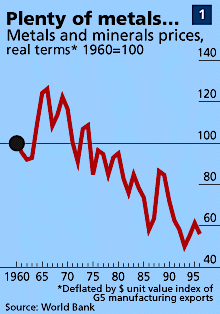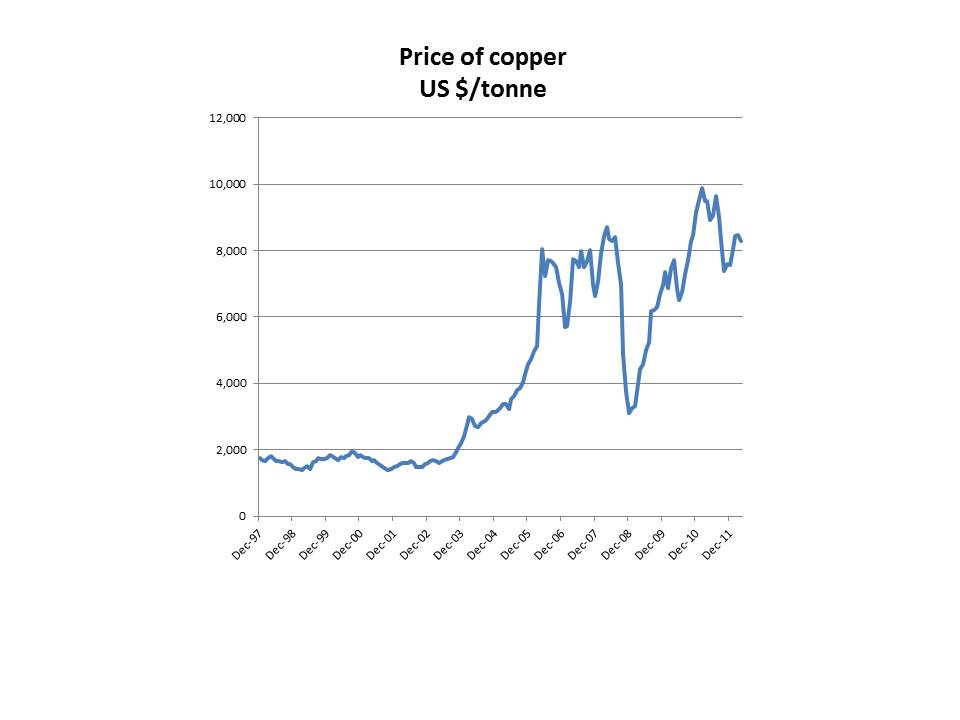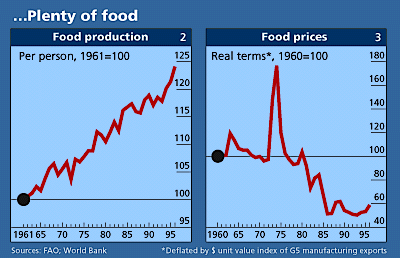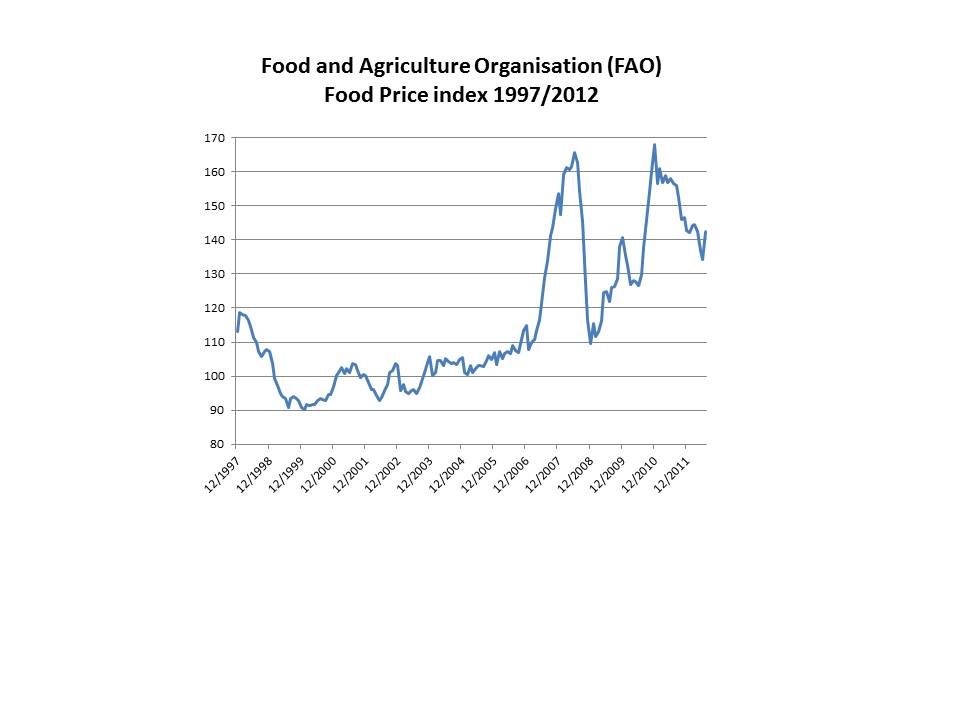Matt Ridley says we are apocalypse junkies
The ever-stimulating science writer Matt Ridley has just published another of his doom-laden warnings about human susceptibility to doom-laden warnings. He tells us that the history of the last fifty years shows that when policy makers are goaded into action by naïve environmentalists, they invariably make things worse. Scientists exaggerate the potency of ecological threats and their expensive cures often achieve nothing. His closing theme is an increasingly common one: ‘why should we trust the scientists on climate change, when they have been wrong about every single environmental issue of the last half century?’ Fifteen years ago, the Economist published a very similar article to Ridley’s in an attempt to get us to stop worrying about global warming. The examples of false catastrophe were strikingly similar to those that Ridley uses this week: the population explosion, the depletion of oil and gas, acid rain, cancer causing chemicals, exhaustion of metal supplies, food production, Ebola virus and so on. In both cases, the writers are eager to tell us that things are actually getting better every day and ecologists should button their lips. Time for a quick retrospective check: how well has the Economist’s Panglossian optimism about the next decades been matched by reality? Very badly indeed, it turns out.
The price of metals
The Economist article started with the conventional attack on Malthus (also a target for Ridley, of course) for suggesting that population growth would outstrip food supply. But it rapidly switched to the 1972 Club of Rome report (Ridley goes for this as well) which projected a rapid exhaustion of available resources of important minerals, such metal ores. Prices would rise rapidly, said the Club.
 What foolishness, exclaimed the Economist in 1997, as it displayed a chart showing metal prices falling by nearly 50% since the apocalyptic report. There is no shortage of ores and no reason for concern.
What foolishness, exclaimed the Economist in 1997, as it displayed a chart showing metal prices falling by nearly 50% since the apocalyptic report. There is no shortage of ores and no reason for concern.
How have things changed since 1997? Below is a chart showing the price of probably the important metal, copper. (US $ per tonne). The cost has more than quadrupled since the Economist article. Other metals have also substantially increased in price.
The magazine went on to make the obligatory reference to the bet between Paul Erlich and Julian Simon. Erlich, a deep environmental pessimist, lost money to Simon who had correctly predicted that metal prices would fall.
Ridley also covers the wager in detail. Surprisingly, he makes no mention at all of the sharp rise in the price of most commodities since 1997. Instead, he says, ‘they grew cheaper’, a comment that will surprise anyone buying any industrial commodity in 2012t. The Economist made light hearted fun of the school textbooks that said that minerals would run out. Ridley does the same.
Food
In 1997, The Economist showed that food prices had fallen significantly since 1960. The prevailing pessimism about agricultural yields was unwarranted.
Was its rosy view of the future correct, or would food prices start to rise again? Unfortunately for the world, food prices have become much more volatile and typically much higher than they were. How does Matt Ridley deal with this inconvenient fact? He says that ‘food prices fell to record lows in the early 2000s’…but ‘a policy of turning some of the world’s grain into motor fuel has reversed some of that decline.’ Not quite correct – current world food prices in the last five years are substantially higher in real terms than at any time since 1990.
Cancer
In 1997, the Economist said that mortality from cancers not related to smoking ‘is falling steadily’ in the age group 35-69. Ridley repeated the claim last week saying that ‘in general, cancer incidence and death rates, when corrected for the average age of the population have been falling now for 20 years’.
Not strictly true: according to research from Cancer Research UK, 61,000 people in the 40-59 group were diagnosed in 2008 compared to 48,000 in 1978, a substantial rise even after taking into increased population numbers. Part of this increase is due to better screening and earlier diagnosis, but Ridley is choosing to ignore the many troubling signs that cancer rates may well now be rising. The Economist of 1997 and Ridley of 2012 pour ridicule on the idea that ‘chemicals’ have much to do with cancer incidence - and they are probably right – but any complacency over the number of cases is severely misguided.
Amazonian deforestation and deserts
The Economist said that the problem was exaggerated and the area logged each year was falling. True: 1997 saw a figure of only 13m hectares (about 5% of the area of Great Britain). But by 2004, Amazonian deforestation had risen sharply again, to a level over double the earlier figure. After sustained action from the Brazilian government, the rate of loss has fallen but almost 20% of the total forest has now been lost.
Even more surprisingly, the Economist felt able to assert that in dry areas there had been ‘no net advance of the desert at all’. The UN thinks differently today, suggesting that 23 hectares are lost to the desert every minute. Unusually, Ridley doesn’t mention this theme at all, probably acknowledging the overwhelming evidence that fragile drylands are turning into deserts at uncomfortably rapid rates.
Acid rain
It’s on acid rain caused by power station emissions that the Economist of 1997 and Ridley of 2012 are most at one. They even use the same quotation from a 1990 US government report. Ridley calls acid rain ‘a minor environmental nuisance’ and both authors point to 1980s opinions that acidification didn’t affect the total volume of standing wood, once thought to be a severe threat. Ridley asserts that there is little evidence of any connection between acid deposition and increasing acidity of streams and lakes. (He is in a very small minority in his scepticism on this).
Both the Economist and Ridley imply that the environmentalists who demanded restrictions on the pollution from coal-fired power plants had needlessly panicked. Woodlands ‘thrived’ in a more acidic environment said the Economist. Not so, says the US government in its latest (2011) report on the impact of acid rain. ‘Despite the environmental improvements reported here, research over the past few years indicates that recovery from the effects of acidification is not likely for many sensitive areas without additional decreases in acid deposition’. Even now, the acidification of land and rivers remains a serious problem.
****
To both these two authors, separated by fifteen years, environmentalists constantly over-estimate the impact of humankind on the world’s ecological systems. The globe, they say, is a much more robust organism than we think and can withstand our meddling. We should look to find technological solutions to ecological problems and not needlessly impose costly regulation.
Most sceptics have the intellectual honesty to stop at this point and admit that the degradation of stratospheric ozone is a good counter-example. If the planet’s governments hadn’t introduced a restriction on ozone-depleting chemicals such as CFCs in the late 1980s and early 1990s, the ozone hole would still be rapidly increasing and letting in increasing quantities of dangerous UV-B radiation. (Too much UV-B causes skin cancer in humans and some animals and affects plant growth).
Matt Ridley won't have any of this nonsense. In a jaw-dropping series of paragraphs, he asserts that the connection between CFCs and other chemicals known to react with ozone and the decreases in ozone levels is unproven. The careful work by Paul Crutzen and others that won a Nobel Prize for showing how a single atom of chlorine can unbind many molecules of ozone is not good enough. Nor is the evidence of the impact of the ozone hole on skin cancer. Ridley says that the ‘the mortality rate from melanoma actually levelled off during the growth of the ozone hole’. It’s not unfair to describe this conclusion as utter nonsense: increasing skin cancer incidence has been linked to rising UV-B radiation for several decades.
But to Matt Ridley it seems more important not to allow the environmentalists to be right about anything. He appears to be worried that his readers might believe if scientists were right – just once in the 1970s - to link man-made chemicals to the extreme dangers of rapid ozone destruction, they might also be correct to say that global warming threatens mankind’s future. I really think we could have expected more from one of Britain’s best writers on science.


